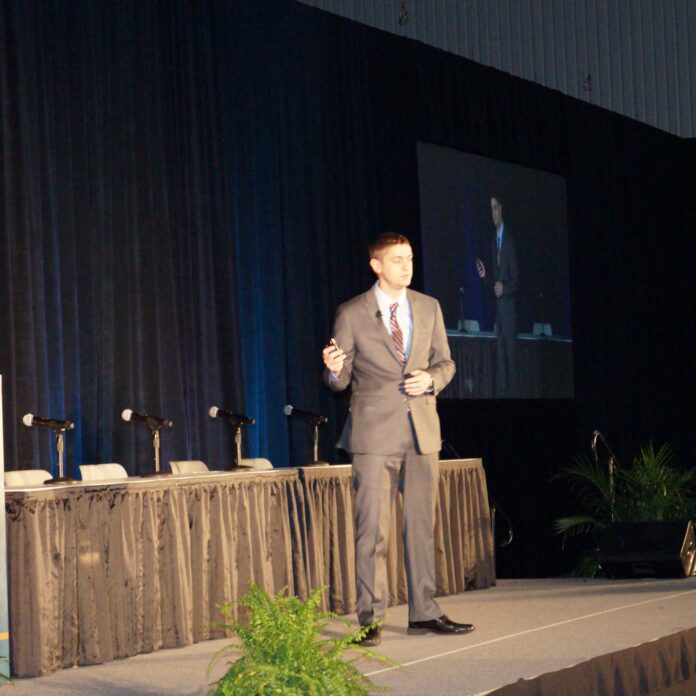LAS VEGAS – In the tradition of its self-driving car and robotics grand challenges, the Defense Advanced Research Projects Agency announced its Spectrum Collaboration Challenge at this week’s International Wireless Communications Expo.
DARPA calls the challenge, which includes a $2 million top prize, “the world’s first collaborative machine-intelligence competition to overcome spectrum scarcity.” Paul Tilghman, project manager with DARPA’s Microsystems Technology Office, said that over the past few decades the way spectrum is used has been increasingly driven by individual connectivity, and the complexity is such that most of the spectrum handling is done by machines: devices choose protocols and which frequencies to use out of an allocated set. But, primary spectrum allocation is still done by humans and operates on a time scale of years, with long periods passing between defined allocations.
“What if the humans didn’t preplan the entire spectrum?” Tilghman said. “What if we didn’t know where every radio was going to be, but asked the machines to sort this out for us?”
DARPA has already begun to explore dynamic spectrum sharing with its spectrum challenge, in which dozens of university teams competed in operating three radios within five-megahertz of spectrum DARPA made available. Tilghman said in an environment where devices must jockey for spectrum, those with fixed strategies tended to perform the worst, while those with “reactive sharing” approaches that respond to packet errors and other signs of degradation did better. But, the best performers were those that proactively shared the spectrum by being constantly aware of the radio-frequency environment and making smart decisions about what action to take.
“This starts to look an awful lot like a machine that learns,” Tilghman concluded, going on to add if machines can understand the RF environment around them and make intelligent spectrum use decisions on a rapid time-scale, it has the potential to change the way spectrum is used.
As part of the SC2, DARPA plans to build what Tilghman called the RF Collosseum. This new test bed would allow physical radios to be put into a large-scale, virtual emulation environment so emerging behaviors can be observed in realistic RF conditions. Challenge participants would be given access to the exact same spectrum, with no prior knowledge whom they will be competing with spectrum for, and the devices will be expected not only to optimize their own use of spectrum, but the overall system’s use of spectrum – including other devices competing for the same resources. Tilghman noted devices would also have to accomplish this “while obeying human goals and objectives,” such as priority for certain users and avoiding obstacles such as incumbent radios that might be present.
DARPA has a website so that interested parties can sign up to receive more information here. According to DARPA, SC2 will take place over three year-long phases set to begin in 2017. Finalists from two initial rounds will compete in a final, live competition in early 2020, and those whose radios best collaborate with others for optimal spectrum sharing will win the $2 million grand prize.

